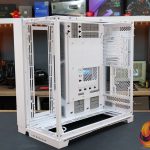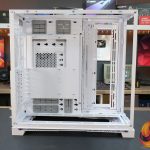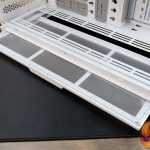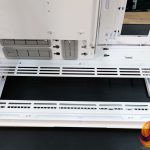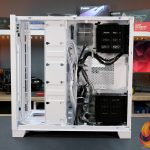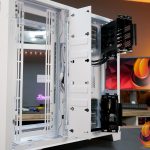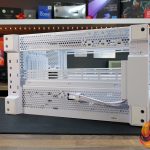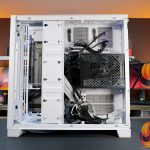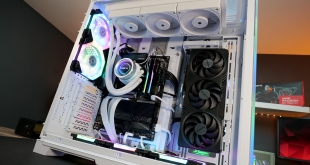
The Lian Li O11D chassis has become a cult hero in the enthusiast PC building scene. It all started in 2018 with the launch of the original O11 Dynamic, which was followed a year later by the O11D XL, soon after the O11D Mini was released, and then in late 2021 Lian Li gave us an early Christmas present with the Evo. So you would think that Lian Li has pretty much exhausted all possibilities with the O11D brand, right? Well, you would be wrong because now we have the evolution of the evolution with a brand new O11 Dynamic EVO XL.
Timestamps:
00:00 Start
02:04 Colours and Pricing
02:39 Features / up close
07:12 Front I/O connectivity
07:37 Inside of the case / cooling support
12:16 Hardware support / GPU install
13:40 Case internal design
19:29 Cable management layout
20:29 Modular floor layout
21:43 Accessories
24:22 Hardware for the build
26:25 Time Lapse Build
31:38 James thoughts
32:10 Thermal Performance
33:02 Closing Thoughts
Lian Li's O11 Dynamic series has been around for a while now with various iterations and evolutions spanning several years. The O11D series has been a big hit with the enthusiast scene and there's no sign of that waning any time soon. Because of this enthusiasm for the O11D, Lian Li has launched another evolution of the chassis, you could call it the evolution of the evolution as it’s a bigger version of the original O11D EVO but with some added features.
The main party piece of the O11D EVO XL is its support for multiple large radiators so the custom loop cooling enthusiasts will be very happy with this one as the case can house THREE 420mm radiators which is enough cooling capacity to keep even the most high-end CPU and GPU combination in check when it comes to thermals. With the high power demands of current CPUs and graphics cards, Lian Li couldn’t have timed this better. But for the mere mortals who want to run systems with basic cooling is the EVO XL any better than the standard EVO, maybe not.
Features:
- Adjustable/removable motherboard tray – Moving the motherboard to the lower position allows for 2 x 120mm rear fans and more space at the top of the case for radiators and push/pull fans. Raising up the motherboard tray creates more space on the case floor for thick radiators.
- The easily detachable Front I/O can be positioned at the front, side and rear of the case for optimal user access.
- A removable floor panel can be swapped to allow for the case to be completely flipped for inverted layout systems.
- Storage support comprises four 2.5/3.5-inch hot-swappable drive bays plus three additional 2.5-inch bays on a hinged panel.
- The case supports multiple 420mm radiator installations with locations on the motherboard side mount, case floor and roof.
- Eight rear PCIe expansion slots with a completely tool-free horizontal GPU mounting system for quick installation.
- Dual compartment layout as seen in previous Lian Li O11 Dynamic chassis designs.
- An optional GPU mount can be purchased separately which allows the graphics card to be mounted upright on the side fan/radiator bracket.
Lian Li O11 Dynamic EVO XL Specifications:
- Case Type: Tower Chassis
- Dimensions: 522mm x 304mm x 531.9mm (D x W X H)
- Colour: Black / White
- Material: Steel, 4,0mm Tempered Glass, Aluminium
- Motherboard Support: E-ATX (Under 280mm) / ATX / Micro-ATX / Mini-ITX
- Expansion Slots: 8
- Storage: 3 x 2.5 SSD + 4 x 2.5/3.5 HDD Cage
- Max GPU Length: 460mm
- Max CPU Cooler Height: 167mm
- Fan Support: 3 x 120/140mm (Top) 3 x 120/140mm (Side) 3 x 120/140mm (Bottom) up to 2 x 120mm (Rear)
- Radiator Support: 420mm / 360mm / 280mm / 240mm (Top, Side and Bottom)
- I/O Ports: 1 x Power / Reset Button, 1 x LED Mode / Colour Buttons, 4 x USB 3.0 Type-A, 1 x USB Type-C, 1 x 3.5mm Audio
- Dust Filters: 1 x Top / Bottom / 2 x Side
Thermal Performance Testing
To simulate thermal demand we run the Cinebench R23 multi-thread benchmark and 3DMark Speed Way stress test simultaneously in a loop for 60 minutes to fully load the system. This gives the CPU and GPU enough time to reach constant steady-state temperature. With this data, we can compare how the system handles the thermal demand and measure peak noise levels.
Thermal performance is measured with the case in various configurations, such as the default, with the tempered glass left-hand side panel removed and with the front panel removed to see how these configurations affect the CPU and GPU temperature. During testing, only stock case fans are used unless otherwise specified. All water pumps are set to maximum RPM and fans are set to a custom RPM curve by the Motherboard software/BIOS.
All temperature measurements are presented as Deltas – meaning the ambient temperature has been deducted from the CPU temperature giving us a Delta. Data shown in the charts represent the average component temperature over the length of the test as measured by HWiNFO and then the last 15 minutes of the data are calculated to get the average. The ambient temperature during thermal tests is between 19-21⁰C.
Test System Specification:
- CPU – AMD Ryzen 9 7950X
- Motherboard – Gigabyte X670 Aorus Elite AX
- Graphics Card – Gigabyte Radeon RX 7900XT Gaming OC
- Memory – 32GB ( 2 x 16GB Modules) GSKILL Trident Z5 DDR5-6400
- Storage – 2TB Patriot Viper VP4300 PCIe Gen 4 M.2 NVMe SSD
- CPU Cooler – Lian Li GA II Trinity Performance 360
- Power Supply – Seasonic PRIME TX-1600 1600W 80+ Titanium ATX 3.0/PCIe 5.0
- Case fans – EK Quantum Impulse 120 Black
- Chassis – Lian Li O11 Dynamic Evo XL White
- Operating System – Windows 11
Thermal Performance/Noise Overview:
Thermal Performance:
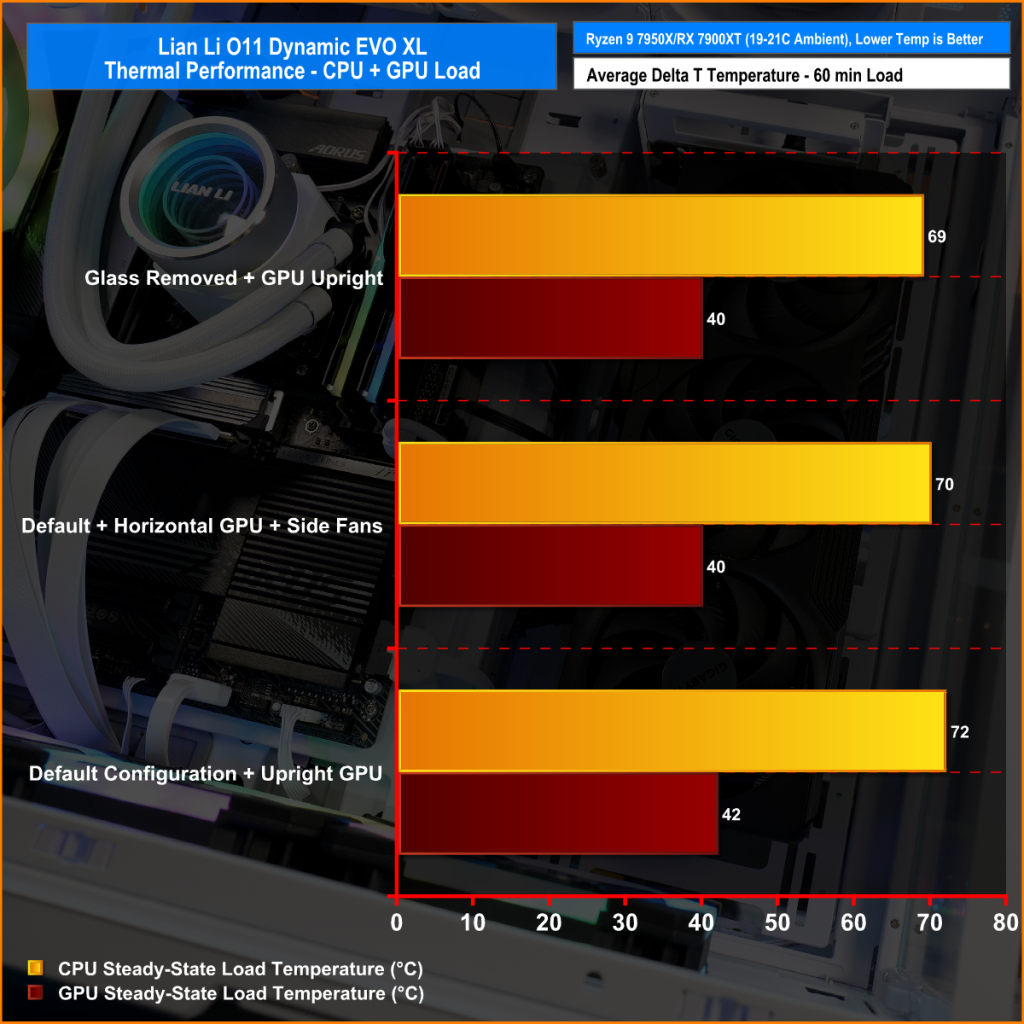
There are no surprises in terms of thermals with the EVO XL, Like its predecessors the dual chamber layout offers good airflow and thermal performance. A CPU temperature delta of 72°C in its default configuration is what we would see from a good airflow case.
GPU temperature is also very healthy with an average delta of 42°C with upright mounting and in the default case configuration. Mounting the graphics card in the default horizontal position improved GPU temperature by a couple of degrees and adding side fans decreased CPU temperature by a couple of degrees, so in either configuration airflow and thermals are excellent.
Closing Thoughts
We have reviewed several large ATX cases in recent weeks but the Lian Li O11 Dynamic EVO XL has been probably the most anticipated out of them all. Unlike the recently reviewed be quiet! Dark Base Pro 901 and the MSI MEG Prospect 700R which were very technically advanced cases with LCD touch screens, Wireless Qi chargers and such, Lian Li has kept it a little more simple and improved the mechanics of the case rather than squeezing more tech into the EVO XL, which means it is considerably cheaper than the two other cases mentioned.
One thing missing from the case is an RGB hub for attaching additional RGB hardware. This could have been a cheap addition which shouldn’t have affected the overall cost of the case but the other design features such as the tool-free installation mechanisms, the upright GPU mounting idea and the support for multiple 420mm radiators are great. Users thinking of picking up this case for custom water cooling will absolutely love it.
Mounting the graphics card in the upright mount is quite simple, just attach two pieces of metalware to the side fan/rad bracket and you are away. The optional upright mounting brackets kit is very cheap at around $6-$7 MSRP but you will need to invest in a long PCIe riser cable which will not be cheap. Lian Li sent us one of their 900mm risers cables which is a good length but we had no information on how much this cable would cost at launch, maybe if you route the cable differently you might get away with using a slightly shorter one but not by much.
The good news for users sticking with the default graphics card cooler is that in either the upright or horizontal orientation, the graphics card temperature was consistent, so users can choose the orientation to suit their build without worrying about any negative effect on thermals. In terms of complete system thermal performance, there are no surprises here either as the case airflow is a tried and tested design which has worked well since the introduction of the original O11 Dynamic.
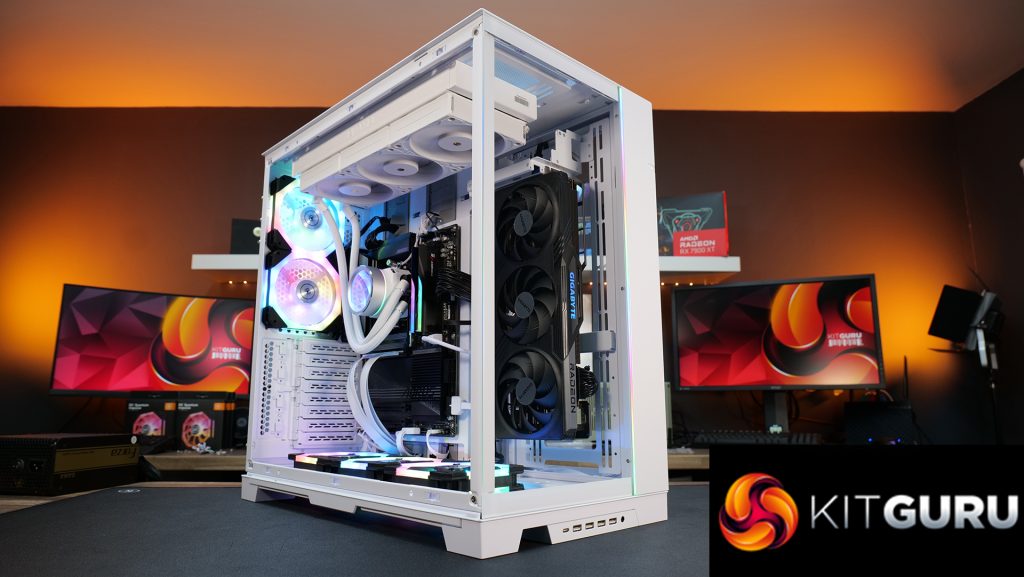
Building a system into the case is quite easy, if you have built in the dual chamber layout before you will know exactly what to expect, its not much different to building in a regular style ATX case, the only minor issue we came across was with the power supply interfering slightly with rear compartment cable management but we used a huge Seasonic 1600W unit which was almost at the max supported length for this case.
The build we chose for the test system is a high-end AMD system with just a single 360mm AIO CPU cooler. Even though a regular ATX motherboard and a pretty big graphics card is used, the system looks a little lost in the huge amount of space offered by the EVO XL, so maybe more basic regular builds like this are not ideally suited to this chassis, It's all about support for multiple big radiators so a custom loop cooled system would be better suited for sure.
If you are thinking of building a high-spec system with a massive custom loop cooling system then this will be the perfect case to show off the build in all its glory. However, if you are thinking of buying this chassis for a more basic build with just AIO cooling on the CPU then it might be a good idea to look at the regular EVO (non-XL) as it is more than capable of housing a high-spec system, it looks almost the same albeit slightly smaller and it will save you money too so its probably a better option for regular builds.
The Lian Li O11 Dynamic EVO XL is available to order now from OCUK priced from £234.99 HERE.
Discuss on our Facebook page HERE.
Pros:
- Load of space to work with.
- Support for multiple 420mm rads.
- Several options for graphics card mounting.
- Modular design allows for inverted layouts.
- EKWB Custom distro plate support.
Cons:
- No included RGB hub to connect extra stuff.
- More basic systems look lost inside.
- Not the best cable management features.
KitGuru says: The Lian Li O11 Dynamic EVO XL will be a great case for custom water cooling but if you want a more basic build, with just AIO CPU cooling, then the standard EVO is a better option.
Be sure to check out our sponsors store EKWB here
 KitGuru KitGuru.net – Tech News | Hardware News | Hardware Reviews | IOS | Mobile | Gaming | Graphics Cards
KitGuru KitGuru.net – Tech News | Hardware News | Hardware Reviews | IOS | Mobile | Gaming | Graphics Cards





